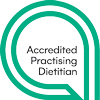Should I restrict how much chocolate my child eats this Easter?
Easter is just around the corner, and if you celebrate Easter and you’re a parent, you may be worrying about your child eating alot of chocolate and wondering how to approach the long weekend.
It’s so tempting to want to micro-manage your child’s consumption of chocolate over Easter, and doing so can seem helpful in the short term. The reality is though, that we live in a world where kids are constantly exposed to chocolate and sweets, and this approach doesn’t help your child learn how to self-regulate their intake of these foods as they get older or on occasions where sweets and chocolate become abundant. Just like they need opportunities to learn to brush their teeth, to write, ride a bike, or to find out how food tastes to them, they need opportunities to learn how much chocolate, how many sweets etc. feel OK in their body. When they don’t get opportunities to do this, it is difficult for them to learn how to self-regulate their intake of these foods.
This might sound strange (especially coming from a dietitian), because mainstream advice recommends limiting (or avoiding) sweet foods for children (and adults). However, you really can help your child much more in the long term, by giving them access to chocolate and sweets and the opportunity to listen to their body, than you will by withholding these foods or restricting the amount they eat. Of course, I am not suggesting you give your child constant all-day access to chocolate and sweets. I’m saying you can make these foods available at times decided by you and within the structure of your child’s usual meal and snack routine. Kids still need structure when it comes to food.
In this blog, I discuss why restricting foods is counterproductive for kids, why regular access to all foods* is important (yes, even chocolate, sweets and co.) and offer some tips on how to approach Easter.
*An important caveat is when a food or foods must be avoided for medical reasons (such as in the case of a food allergy).
Restricting foods is counterproductive
Banning or micromanaging the amount of chocolate and sweets your child gets might seem like the best way to raise healthy eaters and it might appear to be effective in the short term, but long term, this approach is often counterproductive. Having rules around chocolate and sweets or not giving kids permission to eat these foods simply makes them more exciting and desirable in the eyes of a child. Banning them creates feelings of deprivation (or scarcity) around these foods leading to kids becoming more preoccupied with these foods and sneaking or hiding them or eat as much as possible of them when they eventually get the opportunity to do so. The graphic below helps visualise the behaviours and the cycle that restriction leads to in kids (and adults). Also, a 2015 study found parents who overly controlled food for health reasons with their children at ages 3–5 years, were more likely to have children who ate for emotional reasons at age 5–7 while another study found that maternal restriction of food led to daughters eating in the absence of hunger. In a third study, researchers found that restricting certain foods increased children’s intake of, comments, requests and attempts to access these foods after it was restricted.
Regular access to all foods is key
In contrast, kids who have regular access to all foods (but not constant access) learn to eat what they want and to stop when they’ve had enough. They are able to tap into the Intuitive Eating skills they were born with. The key to arriving at this point is to offer regular, but not constant access to foods like chocolate and sweets, and you can do this at times decided by you and within the structure of your child’s meal and snack routine.
Tips for approaching Easter
Inspired by the wonderful work done by the Ellyn Satter Institute, I’ve put together 7 tips for navigating chocolate and sweets this Easter.
1. If you can, keep to your regular family meal and snack times
Maintaining a rhythm around eating and continuing to offer foods you normally serve your child at meal and snack times can make it easier for your child to eat what they need from their Easter chocolate and sweets. Keep in mind that your kids might be so excited about the upcoming festivities or sweets that they might show less interest in eating the foods you serve at meal and snack times. Also, sometimes there’s just so much excitement around the holidays and all the festivities that it can be hard to keep to your family’s normal eating routine on the day. And that’s OK.
2. After the Easter egg hunt, give your child the opportunity to eat enough chocolate
It might feel counter-intuitive, but intentionally creating an opportunity for your kids to eat and enjoy as much chocolate as they want after the Easter egg hunt can help them learn to self-regulate their intake of these foods. Offer some other foods that are part of their regular meal or snack routine alongside the chocolate and sweets, so they have two or three other food options they can choose from if they want. Do keep in mind though that seasonal foods – like Easter chocolate and sweets – will likely be more enticing for them and be prepared for them to eat more chocolate than they might at other times of the year!
3. Resist the urge to micromanage how much chocolate they eat
Not micromanaging how much your child eats can feel really hard. However, micromanaging how much your child eats, as we’ve just seen, is often counter-productive. It prevents them from tuning into their body’s innate signals for hunger and fullness and therefore from learning how to self-regulate their intake of these foods. They need to learn how much feels good in their body. Sometimes, this may mean they eat an amount that leaves them feeling uncomfortable or even sick afterwards. While it isn’t a pleasant experience for them (and possibly you too), it is the kind of experience that helps them discover their own personal limit for eating chocolate and sweets. Remember, they won’t find this out, if you intervene and try to micromanage what they eat. This approach is much more helpful long-term, because making food choices that feel good for our body is a far more powerful motivator than food rules or setting limits (which also often lead to feeling guilty after eating these foods too). If your child does end up feeling uncomfortable, you can consider saying something like “I don’t like it when I eat too much either. You’ll feel better soon.” This helps reduce or prevent any guilt or shame from developing around the eating experience, and reassures them the feeling of discomfort will eventually subside.
4. Enjoy some chocolate with your children
Sitting with your kids and letting them see you enjoying eating chocolate sends them a really powerful message: that they have permission to eat these foods, and that it’s OK to enjoy eating them. Put a bowl on the table (or wherever you are enjoying the chocolate together) and let your kids know that if they don’t like something they taste, they can throw it in the bowl. This helps teach them taste and enjoyment are central to the eating experience. It also serves as a great little reminder that they don’t have to eat anything they don’t like or don’t want to continue eating after trying.
5. Be aware of how you talk about chocolate and sweets
Long-term, you want your child to see chocolate and sweets as just food. When they are treated as just another food, they lose alot of their appeal and children are able to eat them more intuitively. This is why it helps to be mindful of the language you use around food and eating. Instead of calling chocolate and sweets a “treat” for example, which instantly makes these foods more desirable in your child’s eyes, try just calling them what they are: chocolate and sweets. Using negative descriptors of food like “junk”, “bad” or “unhealthy” can lead your kids to think they are bad for eating these foods, which in turn can lead to them feeling guilt or shame after eating them and longterm to an unhealthy relationship with these foods when they are older. Again, you just want to call them what they are: “chocolate” and “sweets”.
Other things to avoid saying include: “If you eat too much of that, you might feel sick”, or “You’re going to make yourself sick with so much chocolate!”. Though well-intentioned, saying something like this communicates the message to your child that they can’t trust their body to tell them when they have had enough and it also prevents them from finding out how much chocolate feels good (or uncomfortable) in their body.
6. Reassure them they will have more opportunities to enjoy their Easter chocolate
After the Easter egg hunt, when they’re done eating the chocolate they want, let them know when they can next eat some. For example, you might say, “you can pick out some chocolate to have at lunchtime tomorrow”. Letting your kids know they will have more opportunities to enjoy the chocolate is an important way of building trust around food and helps stop feelings of deprivation (scarcity) around these foods from developing, something that can lead to kids becoming more preoccupied with these foods. Be sure to follow through with your promise! Continue to offer Easter chocolate and sweets over the following days alongside foods you normally provide at meal and/or snack times you decide.
7. Offer chocolate and sweets through the year, within your usual meal time structure
When you offer chocolate and sweets through the year, at times decided by you, with other foods in the context of your child’s usual meal and snack routine, and with the support of your partner and other people who closely involved with caring for your child (like grandparents), your child will eventually become less preoccupied with these foods and they won’t feel the need to eat as much as possible of them when they get the chance.
Short and sweet
Long-term, restricting or micromanaging certain foods can be counterproductive while intentionally giving your kids opportunities to taste and enjoy chocolate and sweets supports their innate intuitive eating cues and helps them learn to self-regulate their intake of these foods. These opportunities are an important way to build a positive and healthy relationship with food, including chocolate and sweets. Kids who have regular access to these foods learn to eat as much as they need in the moment and stop when they feel they’ve had enough because they know if they eat more they won’t feel good and because they know they will have other opportunities to enjoy these foods in the future. The long term benefits of letting kids learn how to regulate their own intake of food in a way that feels good in their body are worth it – even if it means sometimes allowing them to eat more chocolate than you might like or feel comfortable with!
Wishing you and your family a Happy Easter!
Ready to take the next step and find out how Intuitive Eating can help you and your family? Contact me and request a complimentary call to find out more.






